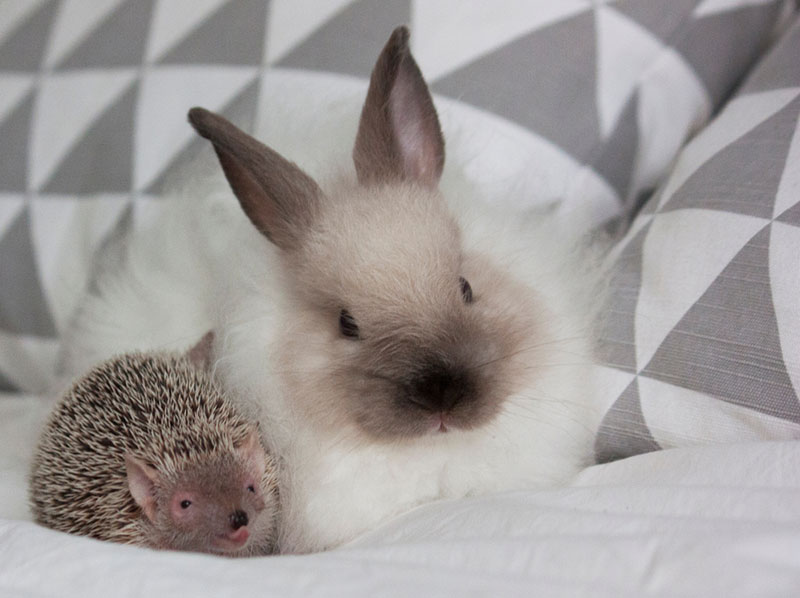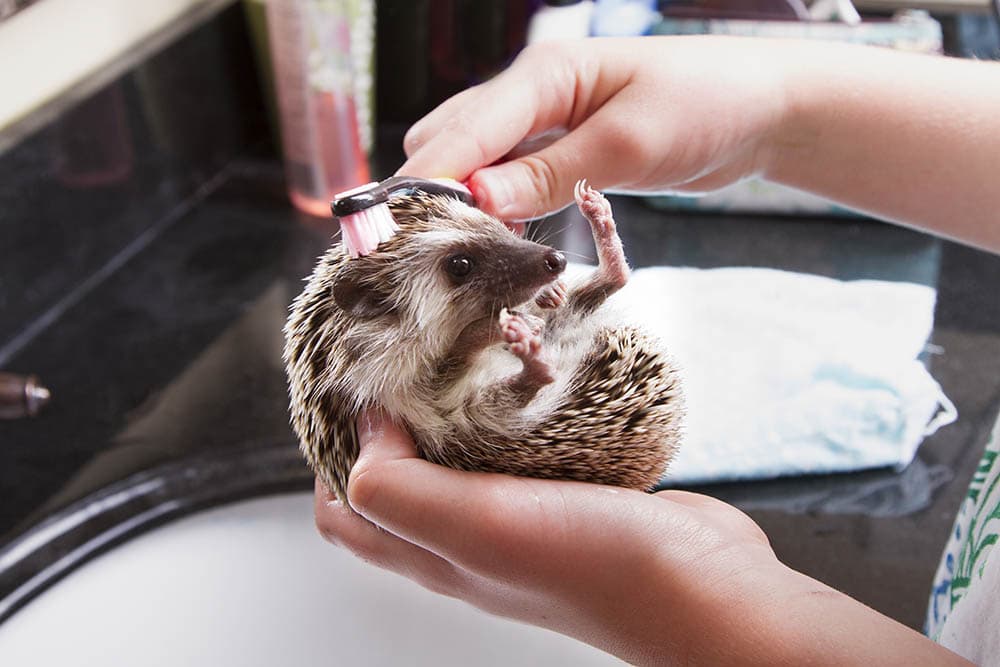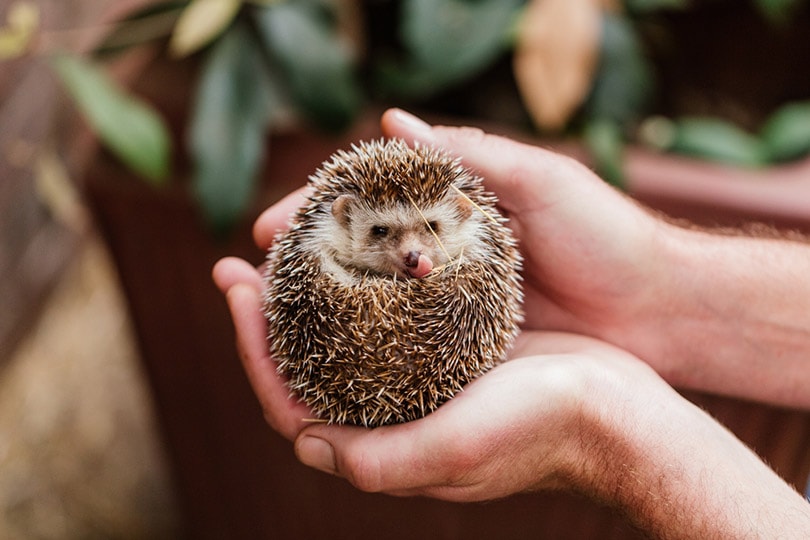
Hedgehogs make great pets, and they have been growing in popularity ever since the popular video game Sonic the Hedgehog became popular in the early 1990s. While the real animal is quite different from the video game character, it increased public awareness and increased sales. If you have recently purchased a hedgehog and want to learn how to better bond with it, we will go over several steps you can take, as well as some tip s you can follow to help improve the time you spend together.
Disclaimer: Like most trusted pet resources, we at Pet Keen recognize that hedgehogs are kept as pets. However, we do not advocate the practice of keeping wild animals as pets. This article is for informative purposes only.
What Is a Hedgehog?
A hedgehog is a spiny animal that has between 5,000 and 7,000 quills. Its back muscles can raise and lower the quills based on its situation and threat level. These quills are sharp, but they are not poisonous or barbed, and they do not pull out of the body like porcupine quills. Hedgehogs are brown and nocturnal. When frightened, they will curl into a ball and expose the quills. Th are very vocal and communicate through snorting, squealing, sniffing, and grunting. They sleep most of the day and prefer underground dens. They have very poor eyesight and are susceptible to many of the same diseases as humans, including cancer.
Hedgehogs are considered an invasive species in some parts of the world. It’s illegal to own them in Pennsylvania, California, Georgia, and Hawaii, so you may want to check with local laws before purchasing one.

The 9 Ways to Bond With Your Hedgehog
Here are some ideas and methods you can use to bond with your hedgehog.
1. Put something that smells like you in the cage.
A hedgehog is at least 3 feet square, which is plenty of room to put in one of your old shirts to help your hedgehog get used to your scent. Hedgehogs don’t see very well, so they put a lot of emphasis on smell. One of the best ways to bond with your pet is to help it get used to your smell by placing objects that smell like you near them.
2. Handle them frequently.

Another way to help them get used to your scent is to handle them frequently. Carefully holding it in your hands, petting it, and switching from hand to hand will help get it used to the idea of being handled, and it will also help the hedgehog get used to your scent. Make sure that when you are handling your hedgehog that you do not wear gloves. Many people will wear gloves to protect their hands from the quills, but it also prevents your hedgehog from picking up your scent.
3. Put them on your lap.
Another way to keep them near you and let them get used to your scent is to allow them to play on your lap. Your lap will provide more room for your pet to move around while still allowing you to pet it and pick it up.
4. Wrap them in a blanket.
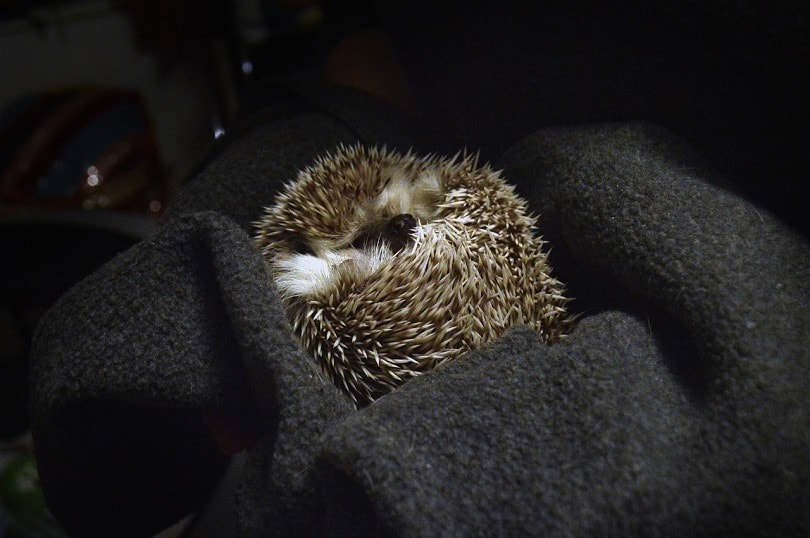
If you haven’t trained your hedgehog to use the litter box, you might want to wrap it in a blanket to put on your lap or keep it near you as you move around your home. The blanket will also help your hedgehog feel secure and give it something to burrow in.
5. Use a snuggle sack.
A snuggle sack is a small pouch specially designed for mice, hamsters, hedgehogs, and other small pets. The snuggle sack is shaped like a sleeping bag and will allow you to keep your pet near you like a blanket and provides your pet with protection and a place to hide. The snuggle sack will also retain a consistent smell and will be more familiar to your hedgehog.
6. Use a bonding bag.
A bonding bag is another type of small pouch used to hold hedgehogs and other small animals. Unlike a Snuggle Sack, the bonding bag has a mesh lid that closes and prevents your pet from escaping while allowing them to breathe. It will enable you to keep your pet with you as you travel or go for walks while keeping them safe and minimizing the risk of escape.
7. Use a hoodie.
If you don’t have the budget for a Snuggle Sack or a bonding bag, you can wear a hoodie backward and place your hedgehog inside the hood to keep it with you as you move about your home. Placing your pet in the hood will help it get to know you and your scent better, and it will become accustomed to being with you. Many hoodies also have a large pocket in the front that will also make a great place to store your pet without requiring you to wear it backward.
8. Take them outside.
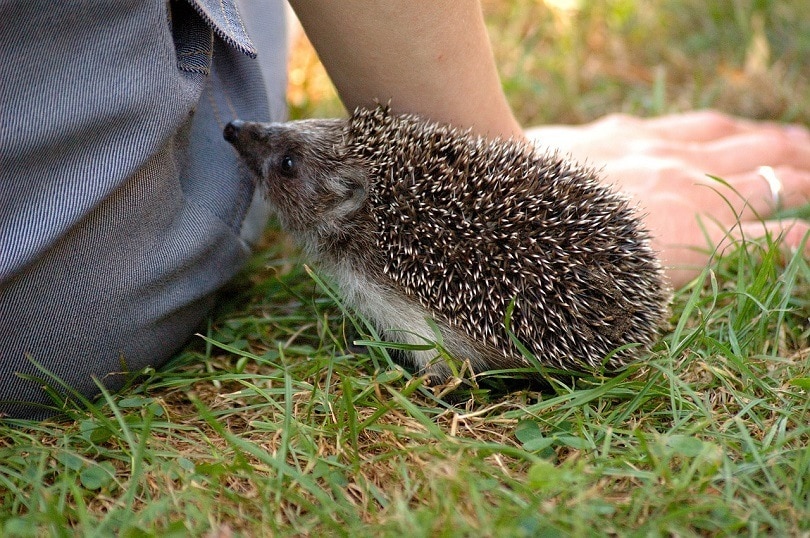
Your hedgehog will enjoy some time outside. You can set up a small cage to play with it in the yard, or you can use a bonding bag to keep your pet with you as you go for a walk. It will enjoy the fresh air and unique fragrances and will associate you with a fun time.
9. Take them for a ride.
As we just discussed, your pet will enjoy some time away from the cage, and taking them for a ride is the perfect solution. You can keep it in a bonding bag if you are the driver, but if you are a passenger, you can use a blanket or a Snuggle Sack to give your hedgehog a little more freedom.
The 4 Additional Tips
Besides the nine methods for bonding with your hedgehog that we have provided here, we recommend keeping these tips in mind:
1. Be Patient
Give your hedgehog time to get used to you. Like humans, each hedgehog will have a unique personality, and some will be friendlier to others. Friendly hedgehogs will bond quickly with their owners, while shy ones may take a long time.
Begin by placing them on your lap on a blanket they keep in their cage. This way, you can pet them will giving them some space to move around. Once it doesn’t look too scared, you can try picking it up with your hands.
2. Be Consistent
Consistency is key to a speedy bonding period. We recommend keeping your pet with you for at least thirty minutes per day using one of the methods we’ve described. Most animals are habitual and like to do things at the same time each day. Once you have done it enough, sitting on your lap or going for a walk will become part of its routine, and it won’t be frightened.
3. Use the Same Detergents
As we’ve mentioned earlier, hedgehogs put a strong emphasis on the scent. One way you can help keep your pet relaxed so you can bond is to use the same detergents. Before you pick up or play with your pet, you should wash your hands with the same soap you do every time. You should also wash their blankets and any other clothing they come in contact with in the same laundry detergent. Using the same detergent will help them recognize home and you.
4. Give It Space
If you notice your hedgehog hissing or jumping towards you, it’s feeling afraid, and the best thing you can do is to back away and let it calm down. Try to determine what is causing the problem and eliminate it if you can. Loud noises, strange smells, and other animals’ hostility are the most common causes of an upset hedgehog.

Summary
It’s not hard to bond with your hedgehog if you follow the steps and tips we provided. Patience is the biggest thing and also the hardest for many people because it can take several months for your hedgehog to relax and become friendly. Some may never let you keep them in your hands the way others do, but we found most will recognize their main provider and will feel comfortable staying near them.
We hope you have enjoyed reading and have learned something new. If we have helped you decide to give one of these pets a try, please share this guide to bonding with your hedgehog on Facebook and Twitter.
- You may also want to read: 10 Best Hedgehog Carriers – Reviews & Top Picks
Featured Image Credit: Elijus3000, Shutterstock



